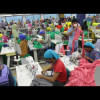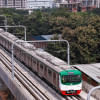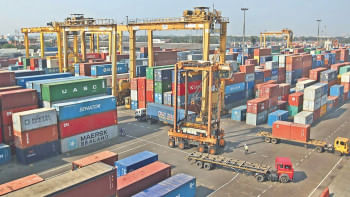Upcoming budget must address inequality

The per capita income in Bangladesh has reached $2,820, according to the latest provisional data released by the Bangladesh Bureau of Statistics (BBS) last week. If this figure remains unchanged in the final calculation at the end of the current fiscal year, it would mark the highest per capita income in the country's history.
Previously, the BBS had reported the per capita income at $2,824 for FY2021-22. However, the figure was later revised down to $2,793 in FY22, according to BBS data.
Therefore, this could have been a moment of celebration for the nation, a symbol of collective progress, if only the gains of this growth were more equally shared. But behind this impressive figure lies a more uncomfortable truth: inequality in Bangladesh is deepening, and unless addressed with urgency, it threatens to undercut the very foundations of our development.
Sometimes, the averages don't tell the whole story. Per capita income is a statistical average, which tells us the size of the economic pie, but not how it's divided. By definition, per capita income means the average income earned per person in a country over a specific period, usually a year. It is calculated by dividing the country's total national income by its total population.
But in reality, the benefits of growth have been disproportionately captured by a small section of society, as they mostly dominate the society.
As much as 40 percent of the country's total income is concentrated within the top 10 percent of the wealthy—up about three percentage points since 2016—found the latest BBS Household Income and Expenditure Survey (HIES) 2022. Additionally, the income accruing to the bottom 5 percent of households was 0.37 percent in 2022, which was 0.23 percent in 2016, adds the report.
The bottom 50 percent of households have 19.05 percent of the total income, down from 20.23 percent in 2016. According to the HIES 2022 report, the Gini coefficient, which is the economic measure of inequality, stood at 0.499 in 2022, in contrast to 0.482 in 2016.
Now, the Gini coefficient of Bangladesh is at an all-time high, which means that inequality in society is also at an all-time high.
When the country ranks among those with the highest income disparities globally, there is another problem even worse than that: wealth inequality, which means a minuscule portion of the population owns a disproportionate amount of wealth compared to the majority. Wealth inequality rose from 0.82 in FY16 to 0.84 in FY22, according to the white paper report on the state of the Bangladesh economy, where data from the HIES was used.
Citing World Bank data, the white paper said that among the 72 countries with Gini coefficient data, only Colombia, Brazil, and Panama reported values over 0.50 in 2021. In the case of wealth inequality, data from the World Inequality Database (WID) for 2022 paints a grim picture of economic disparity in Bangladesh.
The wealthiest 10 percent of the population controlled a staggering 58.5 percent of the country's total wealth. This concentration underscores the disproportionate accumulation of assets among a small segment of society, according to the taskforce report. In contrast, the bottom 50 percent of the population collectively held a mere 4.8 percent of the wealth, highlighting the limited resources available to half of the nation.
Income inequality in Bangladesh shows stark urban-rural disparities. Cities like Dhaka and Chattogram, driven by industrialisation and investment, have seen faster income growth and better living standards. However, rural areas—home to over 60 percent of the population—face limited access to quality services and economic opportunities, leading to slower development.
Between 2010 and 2022, the rural Gini coefficient rose slightly from 0.431 to 0.446, while the urban Gini jumped from 0.452 to 0.539, indicating rising inequality and that urban growth has largely benefited the wealthy. Such extreme inequality is not only morally troubling; it is economically destabilising.
While national income may be rising, that headline figure does not reflect the lived reality of most Bangladeshis. Wages for the working class remain stagnant, the cost of living continues to climb, and inflation has steadily eroded the purchasing power of ordinary families.
For the past 26 months, inflation has remained above 9 percent. In this context, a higher per capita income offers little comfort to those who are being left behind.
How can the budget help reduce inequality?
Fiscal policy is a powerful tool to reduce inequality, but only if it is used that way. Unfortunately, Bangladesh's tax system remains regressive. Over 65 percent of our revenue comes from indirect taxes like VAT, which disproportionately affect the poor. Meanwhile, the effort to impose wealth, property, and capital gains taxes is still out of the race.
A positive signal may emerge this year as the government is considering reintroducing the 30 percent income tax rate for top earners from the upcoming fiscal year—those making over Tk 38.5 lakh annually—a move that reverses previous rollbacks and indicates some intent to pursue progressivity. But the rate of surcharge is likely to remain the same for wealth and the environment.
Currently, Bangladesh imposes a surcharge on wealth, but its effectiveness is limited. The surcharge ranges from 0 percent for assets up to Tk 4 crore to 10-35 percent for higher asset brackets.
The government needs to rationalise and expand the country's social safety net programmes, and bringing an additional million people under coverage could help ease the burden on low-income households and make a meaningful dent in inequality. In addition, tackling inequality requires expanding the direct tax base, especially by targeting high-value assets, and introducing wealth and property taxes, as well as reducing tax evasion.
In FY23, Bangladesh lost an estimated Tk 226,236 crore in potential revenue to tax evasion and avoidance, largely due to rampant corruption and a weak but complex system, according to a study by the Centre for Policy Dialogue.
At the same time, investments in universal education, healthcare, and rural development must be prioritised. Social protection systems also need to be more transparent, digitised, and better targeted to reach those most in need. Strict monitoring and effective action against corruption can help reduce inequality, as many of the issues stem from corruption and fiscal irregularities.
Inequality is not just an economic issue, it's a political and social one. It determines who gets access to opportunity, who benefits from public services, and whose voices are heard in the policy process.
Inequality is not an inevitable outcome of growth. It is a result of choices—of who we tax, where we spend, and whom we prioritise.
As such. It is high time we made better choices.
Md Asaduz Zaman is a journalist at The Daily Star.
Views expressed in this article are the author's own.
Follow The Daily Star Opinion on Facebook for the latest opinions, commentaries and analyses by experts and professionals. To contribute your article or letter to The Daily Star Opinion, see our guidelines for submission.

 For all latest news, follow The Daily Star's Google News channel.
For all latest news, follow The Daily Star's Google News channel. 










Comments